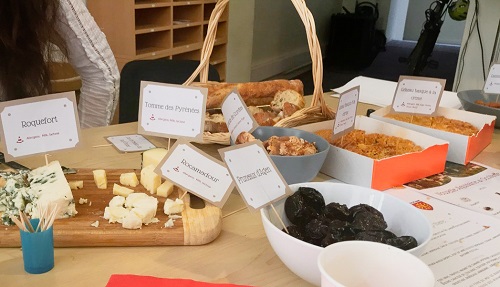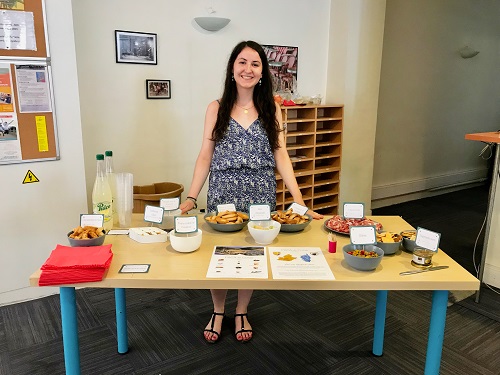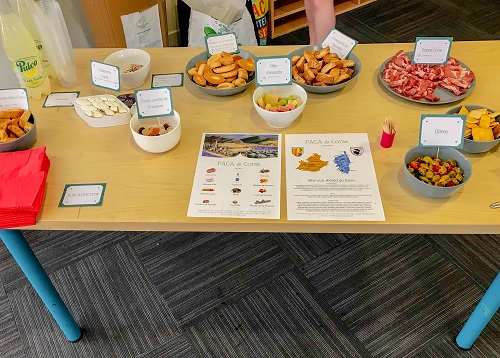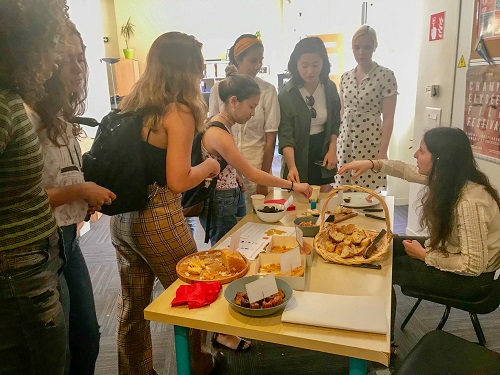Trying new foods is always an experience -- good or bad. A memorable way of trying foods from different cultures is trying them with someone native to that culture and allowing them to explain a bit of what it is, the origins, what it pairs with, etc. Here at the CEA Study Abroad center in Paris, we have frequent food tastings which allow students to taste the different regions of France and their cultures, bridging the gap to show them that French food is more than just cheese, bread, and wine (although it is still very much cheese, bread, and wine). Our very own Marguerite organizes these food tastings for our summer students. Through research and personal experience, Marguerite arranges which foods she is going to showcase, some history about the region, and maps to show students.

Marguerite, an intern for CEA, was born in Annecy and grew up in Grenoble which are both in the Rhone Alpes region in the south-east of France. With family also in Brittany, which is in the northwest of France, Marguerite’s exposure to multiple regions in France has allowed her to experience different types of French cuisine. From sun legumes to regional spices, food is a big staple in French culture, and so is family. Sundays in France are a day to spend with your family and get to eat and enjoy great French cuisine. Marguerite reminisces that growing up, her mother would make delicious French meals and sitting down together as a family to enjoy them was vital in their culture. For the food tastings that Marguerite puts together, she uses her knowledge and experience to create a wonderful table including both sweet and savory treats for the students.

In the food tastings here at CEA, we are introducing students, faculty, and staff to new foods in a way to connect them to the culture they're living in while they are abroad. Each tasting focuses on one of the 18 regions of France. The three important things in putting a tasting together is picking foods that are a staple from that region, knowing the history about them, and most importantly, making sure they are select items that students are able to go out and find themselves. Tastings can include anything from cheese and meats to baked goods and candies. Since every region is different, every tasting is different. One of Marguerite’s favorite parts about the tastings is when students engage and ask questions. Marguerite gets to explain what makes a food special to that region, the stories and legends behind some of the specialties, and what ingredients it may contain. This allows students to see what foods they like so they can take some home and share it with their friends and family.

Terroir is another reason one should try new foods here in France. Terroir is a French word meaning from the earth. This term encompasses a set of different environmental factors such as various landscapes, sun, climate, atmosphere, soil, farming practices, etc., in how certain foods are made. For example, Marguerite talks about Roquefort cheese, which is a blue cheese from Roquefort, France. However, in order to get the specific flavor of the cheese, it must be produced in Roquefort because it contains a certain bacteria, penicillium roqueforti, that is only present there and this bacteria makes the milk transform into the cheese. This example is true for many products in France, if the label on the foods say AOC, it means that it was made from the terroir of that specific region or area, giving it credibility.

One thing everyone has in common is that we all eat, and somehow, food has a way of bringing people together. These food tastings help us here at CEA to break bread with the students and staff to get to know them a little better and vice versa. At the end of it all, it is about having fun and learning more about yourself and how food can make an impact on your time studying abroad.












